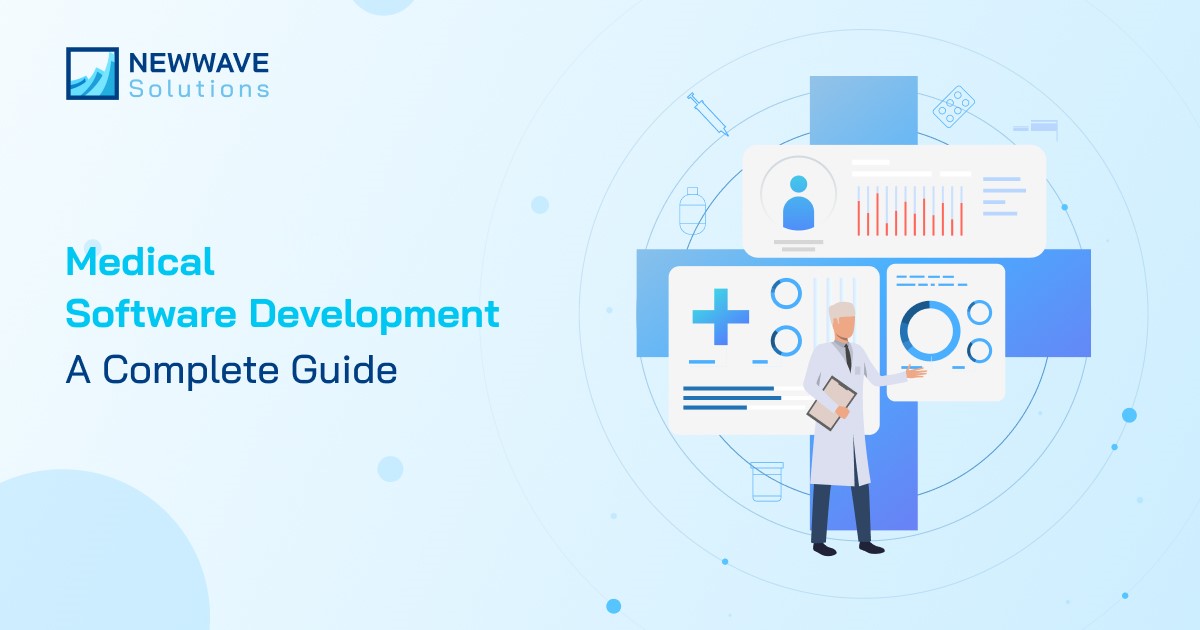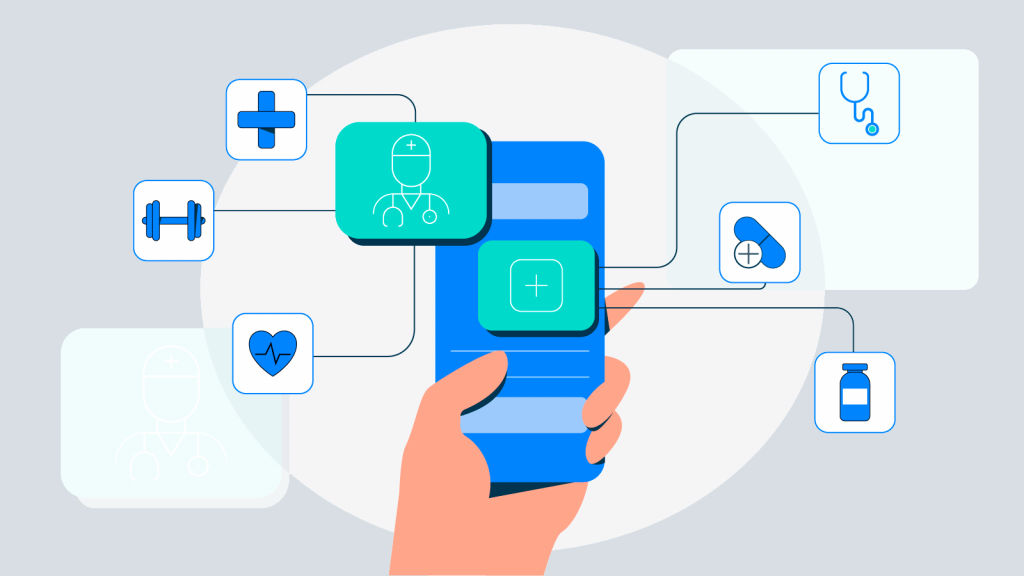
Medical Software Development | A Complete Guide

The medical sector is undergoing a significant digital transition with medical software development providing healthcare providers and patients with a top-notch experience. In fact, the global healthcare software as a service market size is expected to reach around 80 billion dollars by 2030. This complete guide for medical software development will provide you with all information about medical & healthcare apps and how the medical industry is advancing digitally.
Table Of Contents
ToggleWhat is Medical Software Development?
Medical software development refers to the process of creating software applications that are specifically designed for use in the healthcare industry. These applications can be used by healthcare professionals, patients, and other stakeholders to improve the efficiency, effectiveness, and safety of healthcare services.
Some examples of medical software include electronic health records (EHR) systems, patient scheduling and appointment management systems, laboratory information systems, and telemedicine platforms. Medical software development typically involves a team of software developers, designers, and testers who work together to create a software product that meets the needs of the healthcare industry.
Note that if you go for medical device software development then the development process is subject to strict regulations to ensure its safety and effectiveness. In the United States, the Food and Drug Administration (FDA) is responsible for regulating medical devices, including the software used in these devices. They have specific guidelines and requirements for the development, testing, and approval of medical device software.
Tech Stack to Use in Medical Software Development

The technology stack used in medical software development will depend on the specific needs and requirements of the software being developed. However, some common technologies that may be used in the development of medical software include:
- Programming languages: Some popular programming languages for medical software development include Java, Python, C#, and C++.
- Databases: Medical software often involves storing and managing large amounts of data, so a robust database system is important. Some common databases used in medical software development include MySQL, PostgreSQL, and MongoDB.
- Frameworks: For web-based medical software, developers may use frameworks such as Django, Rails, or ASP.NET to build and maintain the application. For medical software that is designed to be used on mobile devices, developers may use frameworks such as React Native or Flutter to build native mobile applications.
- Integration tools: Medical software may need to integrate with other systems and applications, such as electronic health records (EHR) systems or laboratory information systems. In these cases, developers may use integration tools such as MuleSoft or Dell Boomi to facilitate data exchange between systems.
It’s important to note that the technology stack used in medical software development will depend on the specific needs and requirements of the software being developed.
The Process of Developing Medical Software
Just like other software, medical software is not different at all in terms of managing various activities. Notably, there are critical steps involved in the entire process of developing medical software. Each grade serves a crucial purpose in the whole process. Let us get straight to the step-by-step process of developing medical software!
Step 1: Determining Medical Software Requirements
In any development process, the determination of requirements is critical. In developing medical software, you need first to establish the criteria for the entire software. Your decision-makers can use this information to cross-check clinical, patient, and user information that will be useful for showing the activities that need to be fulfilled in the entire process of software development.
Step 2: Researching and Proposing a Prototype of the Medical Software
After you determine the requirements, the entire team development team should collect essential information that will help you develop a medical software solution. You and other members of the team will evaluate possible solutions for your project.
Step 3: Design and Development
Real work starts in the design and development stage. In the initial step, a team of experts develops a prototype of the medical software. But at this stage, the prototype is used for designing and building custom medical software. More importantly, these experts ensure that custom software sticks to all project guidelines. They also make sure that the postulated outcome meets various medical agencies’ standards and policies.
Step 4: Medical Software Testing
Medical software should be tested extensively to ensure no errors or hitches occur when it is used. If the software works as intended, it can be implemented into full use. Testing is critical because mistakes made while testing could lead to future problems.
Step 5: Medical Software Validation and Deployment
The final stage of developing medical software is validation. The software has gone through rigorous debugging and testing, so it’s ready for use once it’s validated. There are several advanced validations and accreditations to ensure that software doesn’t fail during usage. More importantly, at this stage, the team chooses to work on the project and seeks approval from the FDA and other validation forms. Once validated, the software undergoes deployment and is made available to all necessary health facilities.
Experience in Developing Medical Software from Experts

Newwave Solutions have completed a number of medical software development projects, including embedded programming, API integration, client-server architecture, medical clinic software development, and more.
One of our best medical software development projects is about designing a medication tracker app for our client hospital. Below is what we’ve achieved:
- Maintain and update new features while ensuring system stability.
- Wrote testing source code to ensure correctness throughout the maintenance process and successful new feature updating.
- Optimized the server for optimum information intake
- Built a fast tablet application with real-time scalable ECG visualizations and many other vital functions.
- Users can browse information like ingredients or side effects of more than 12.500 types of OTC drugs and 22.000 types of prescriptions. Learn more here!
What was the success? The customer received the application that meets all business and technical requirements within a reasonable timeframe.
Now, the application is fully developed and available on both iOS and Android. Our team is still engaged in the project: we provide ongoing support and develop additional features upon customer request.
Newwave Solutions provides offshore development for all businesses from different geographical regions and industrial spheres. If developing a successful medical software development is your ultimate goal, don’t hesitate to fill out our contact form and get a free consultation from our specialists!
To Quang Duy is the CEO of Newwave Solutions, a leading Vietnamese software company. He is recognized as a standout technology consultant. Connect with him on LinkedIn and Twitter.
Related News
-
 3 Common IT Outsourcing Types Transform Your Business EfficiencyDecember 25, 2024 View more
3 Common IT Outsourcing Types Transform Your Business EfficiencyDecember 25, 2024 View more -
 Top Offshore Software Development Vietnam CompaniesDecember 23, 2024 View more
Top Offshore Software Development Vietnam CompaniesDecember 23, 2024 View more -
 Outsourced IT Services For Small Business SuccessDecember 23, 2024 View more
Outsourced IT Services For Small Business SuccessDecember 23, 2024 View more


